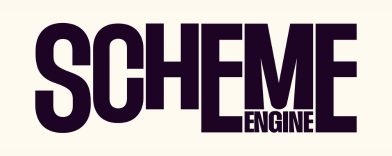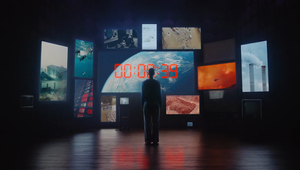
How AI Optical Illusions Made Secret Eye Tests Out of Billboards

‘The Hidden Eye Test,’ recently launched by 1001 Optometry and VML Australia, uses AI-generated visuals to reveal hidden messages in OOH ads. Messages like "eye test" or "eye scan" were only visible to people with vision impairments, prompting them to seek professional care.
Developed with art studio Prospex Park, the work detects issues like near-sightedness, glaucoma, and diabetes-related vision changes while doubling as stylish eyewear promotions.
VML Sydney creative director Jack Delmonte, AI artist Prospex, and 1001 Optometry retail and optometry director Edward Lee spoke to LBB about how they tacked together multiple AI tools to create the optical illusions.
They also discussed the campaign’s high-fashion aesthetic, ethical AI use, and its potential to shift public behavior by making eye health feel urgent and engaging.

LBB> What AI tools and workflows were used by Prospex Park, and why were these chosen over other available technologies?
Prospex> We always knew that AI was the only way to execute this specific idea. It required an extreme level of control of every single element in the frame that just couldn’t be achieved with a camera.
But while AI was the only way, it was a far throw from an ‘easy route’. For starters, no single AI tool could achieve the precise balance of optical illusion and high-fidelity detail we needed while also maintaining Prospex Park’s distinct aesthetic. Instead, we developed a hybrid approach, combining multiple technologies to achieve the desired effect.
To paint the process in broad strokes, we started by repurposing an older program initially designed to integrate QR codes into imagery. This allowed for the optical layering effect we were looking for. In parallel, we trained a LoRA model using approximately 100 images from his existing body of work, ensuring the AI-generated compositions remained stylistically consistent with the art style.
From there, each piece was refined through extensive AI inpainting and retouching – manually swapping out elements, adjusting faces, and correcting image inconsistencies. This multi-step workflow provided both creative control and the high level of precision required for a campaign of this scale.
LBB> There is some specific technology required for this execution – did this limit the campaign’s overall rollout?
Prospex> The combination of AI programs and extensive retouching was essential to ensuring the final images held up across all formats, from large-scale OOH billboards to digital applications. Maintaining high resolution and image fidelity at that scale was non-negotiable – our goal was to create visuals that remained striking and immersive, no matter the state of the viewer’s eyes.
We also put significant effort into ensuring the ‘squint test’ worked even at smaller sizes, so the illusion remained legible and effective across all placements. Achieving the right balance between a visually compelling image and optimal text legibility required extensive R&D and fine-tuning. While the process was more time-intensive, it ensured the final results met our standards without compromising the creative vision.
LBB> How did you determine the specific visual elements (colours, contrast, composition, etc.) that would effectively reveal vision issues in real-time?
Jack> Crafting an optical illusion is extremely complex, but the equation is brutally simple: to create a rift between what the eyes see and what the brain wants to see.
But we needed to go a step further than the other illusions out there. We needed to hide the illusion so well that the brain wouldn’t be triggered to fill the gaps unless the image was blurry. But not so hard that even blurry eyesight couldn't see it. Turns out, the line between both is razor thin.
After a lot of R&D, we found that contrast was our key to success. But we had to use it in a way that felt so natural to the image that the brain couldn’t pick up on it. To do so, that contrast was staged with a perfect composition of bodies, colours, shapes, foreground and background.

LBB> What challenges did you face during the year-long R&D process, and how did you overcome them to achieve the final result?
Jack> The biggest challenge was the unknown. It’s always challenging to innovate. It’s uncharted territory, and there’s always that tiny voice in your head that wonders whether it’ll ever work the way you want it to.
Starting the process internally, we hit every single ‘dead-end’ we thought was out there. And then, when we started working with Prospex Park, we found about a hundred more. But every dead-end was a lesson, inching us closer and closer to the final product.
The lesson here is to trust the process. If every ‘dead-end’ still brought us to the final product, was it really a ‘dead end’?
LBB> How did you ensure the campaign’s accessibility and effectiveness across different demographics, including those with varying degrees of vision impairment?
Edward> This whole campaign was about taking eye tests out of optometrist examination rooms and onto the streets, catching Aussies of all demographics while they are in transit. So, it was designed to be highly accessible for as wide an audience as possible. It was explicitly crafted for short-sighted individuals -- those suffering from myopia -- because it’s the most common eyesight issue in Australia.
Myopia is not just inconvenient because it results in blurred distance vision (which is why short-sighted people are able to see the hidden messages), it can also lead to serious eye health problems.
LBB> How did you balance the campaign’s educational purpose with its high-fashion aesthetic to appeal to a broader audience?
Jack> The idea for the campaign started with the illusion: how do we craft a message that shows people they need an eye test, rather than simply tells them. That took a lot of exploration, research and trials.
Once we nailed down how we’d achieve that, the next question was: what in the world will this ad look like for everyone else? Considering the way the illusion worked, it afforded us the ability to do the one thing clients are always asking us to do, and the one thing we keep saying is impossible: to talk to two different demographics at once. That’s why we approached Prospex Park, a pioneering LA-based AI artist that has a distinct avant-garde style you’d expect to see from the likes of Gucci or Versace.
LBB> What long-term impact do you hope “The Hidden Eye Test” will have on public awareness and behaviour regarding eye health in Australia and beyond?
Edward> ‘The Hidden Eye Test’ is just one step in encouraging Australians to seek regular eye tests, and our immediate aim was to get the conversation going and get people to act. The stats are not good – according to Optometry Australia, 26% of Aussies have not had an eye test in the last two years, even though 97% report concerns with their eyesight.
Obviously, regular messaging is just not getting through, and campaigns like ‘The Hidden Eye Test’ are critical to cut through the noise.










